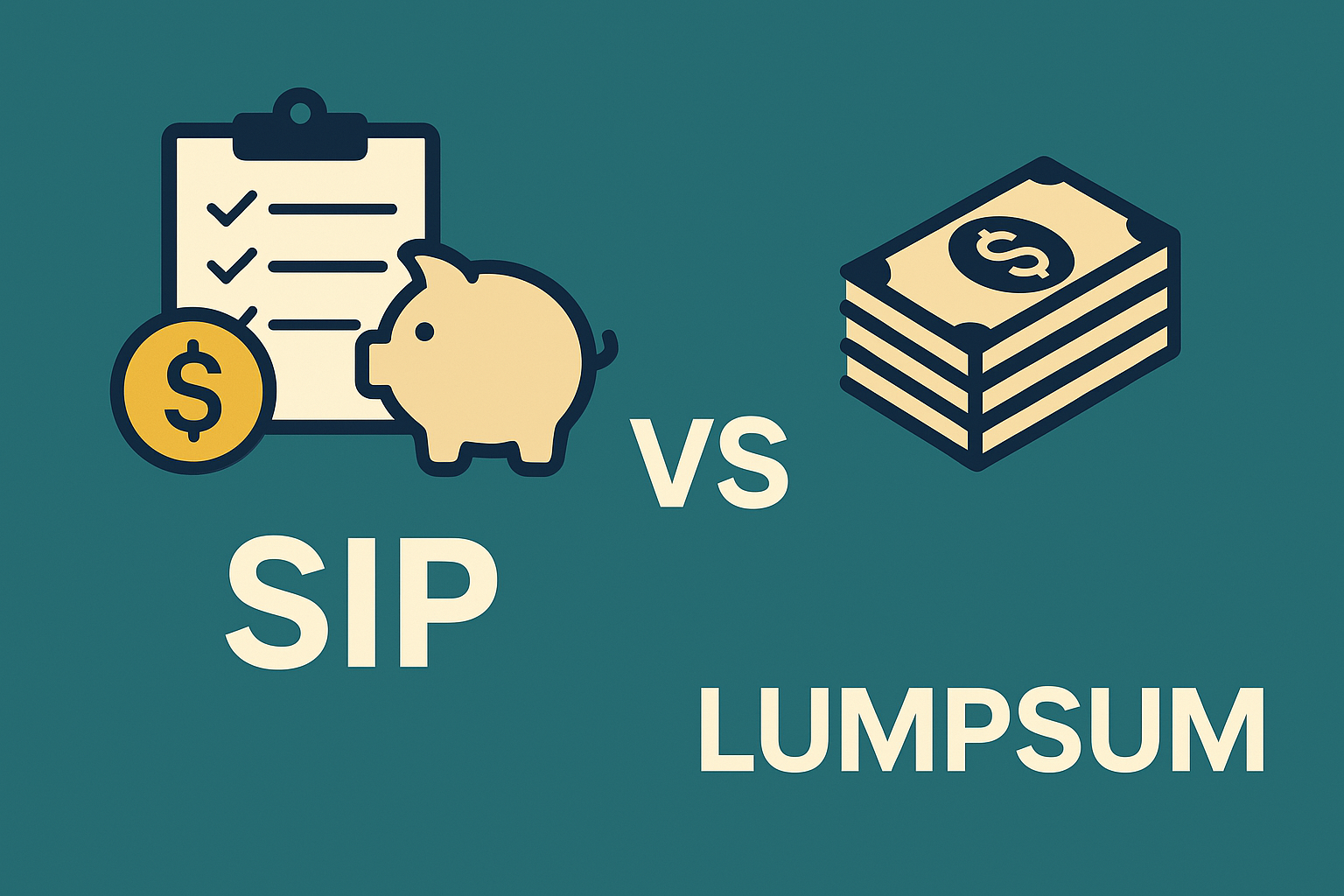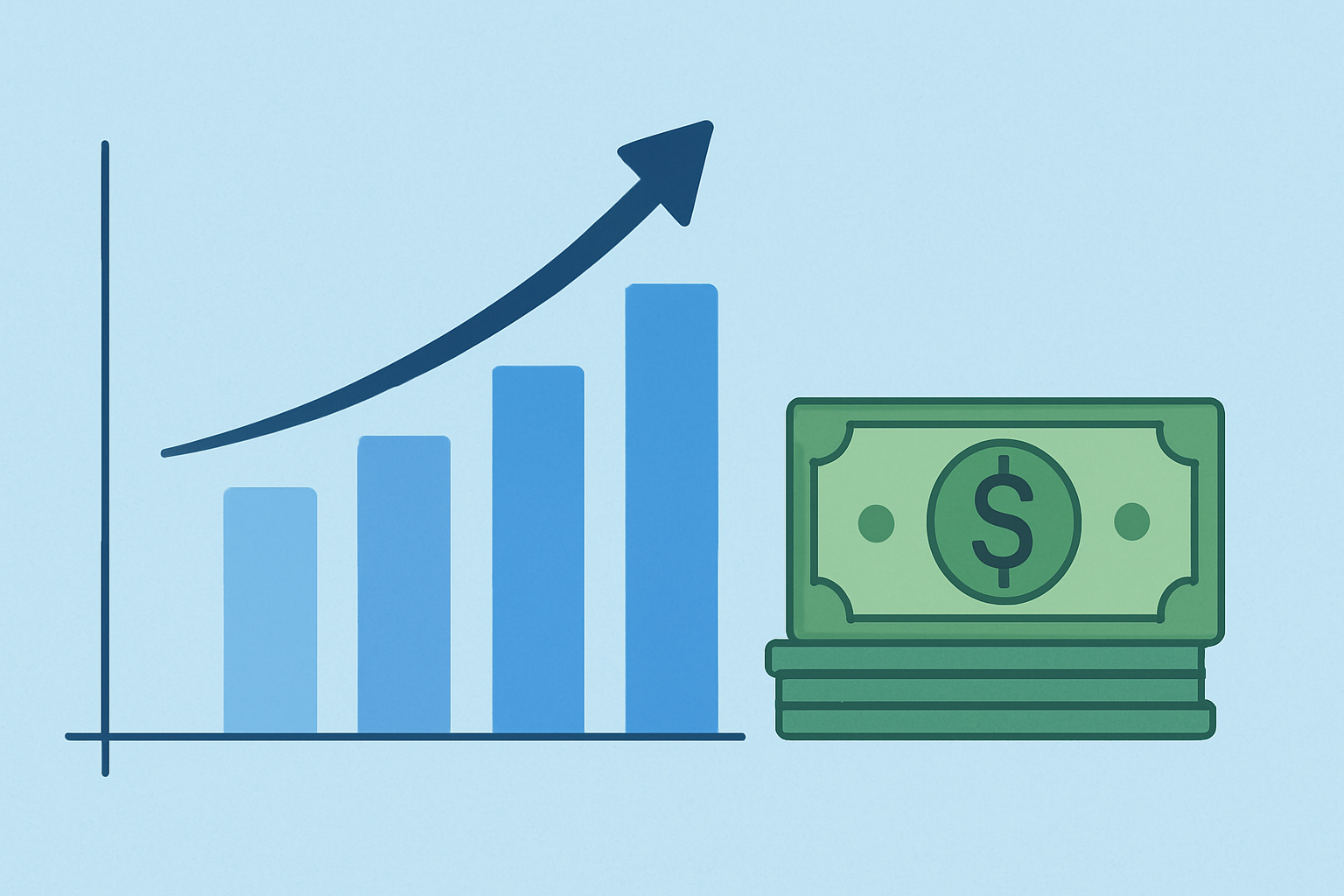SIP vs. Lumpsum—it’s one of the most common debates in the world of personal finance.
Should you invest a fixed amount regularly (like $100/month), or should you go all in and invest a lump sum at once?
In the U.S., these two popular strategies are generally referred to as
-
Systematic Investing (SIP-style)
-
Some Investing
Both can help you build wealth over time, but depending on your financial goals, risk tolerance, and how you earn, one method may suit you better than the other.
Let’s break down SIP vs. lump sum investing in simple, beginner-friendly terms so you can decide what works best for you.
When it comes to investing, one of the most common questions is
Should I invest a fixed amount regularly, or should I invest a big chunk all at once?
In the U.S., these approaches are generally referred to as
-
Systematic Investing (similar to SIPs)
-
Some Investing
Both strategies can help you grow your wealth — but depending on your goals, income, and risk tolerance, one may suit you better than the other.
Let’s break it all down in simple terms.
What Is SIP (Systematic Investment Plan)?
While SIP is a term more commonly used in India, it’s essentially the same as setting up automatic recurring investments in the U.S.
In the U.S., SIP-style investing means:
-
Investing a fixed amount regularly (e.g., $100 every month)
-
Typically done through mutual funds, ETFs, or retirement accounts
-
Examples: Auto-investing $50/month into an S&P 500 ETF on Fidelity or Vanguard
Pros of SIP-Style Investing:
-
Builds discipline and consistent investing habits
-
Smooths out market volatility (dollar-cost averaging)
-
Great for beginners and salaried individuals
-
No need to time the market
-
Easier to manage on a monthly budget
What Is Lump Sum Investing?
Lump-sum investing is when you invest a large amount of money at once instead of spreading it out.
Example: You get a $5,000 bonus and invest the full amount in an index fund today.
Pros of Lump Sum Investing:
-
Your money has more time in the market, potentially earning more returns
-
Historically performs better on average if markets are rising
-
Good when you already have a big chunk saved up
SIP vs Lumpsum: A Simple Comparison
| Feature | SIP (Systematic Investing) | Sum Investing |
|---|---|---|
| Investment Frequency | Monthly/Weekly | One-time |
| Ideal For | New earners, long-term savers | Windfalls, bonuses, large savings |
| Risk Level | Lower (averages out volatility) | Higher (depends on entry point) |
| Requires Market Timing? | No | Yes (can be risky if mistimed) |
| Time in Market | Gradual | Immediate |
| Tax Treatment | Same (based on gains/holding period) | Same |
Historical Perspective: What Performs Better?
Studies by firms like Vanguard and Schwab show that lump-sum investing tends to outperform SIP about 2/3 of the time, but only if the market is generally moving upward.
However, SIP outperforms in volatile or declining markets, as it takes advantage of buying at lower prices consistently.
Example:
-
If you invested $12,000 at once in Jan 2020 (before the COVID crash), your portfolio would have dipped sharply and taken time to recover.
-
But if you invested $1,000/month (SIP style), you’d have bought during both highs and lows — lowering your average cost.
When to Choose SIP-Style Investing in the U.S.
Choose SIP-like investing when:
-
You’re just starting out
-
You earn monthly and want to grow steadily
-
You don’t want to worry about market timing
-
You want to invest in retirement accounts (401(k), Roth IRA)
-
You’re building a habit of investing
Examples of SIP in the U.S.:
-
Auto-investing $100/month into Vanguard Total Stock Market ETF (VTI)
-
Contributing monthly to a Roth IRA
-
Setting up recurring deposits on Fidelity, Robinhood, or Charles Schwab
When Lumpsum Might Be Better
Choose lump-sum investing when:
-
You receive a windfall (bonus, inheritance, tax refund)
-
You already have savings set aside
-
You’re confident the market outlook is positive
-
You want your money to start working immediately
Lump sum works great if you’re investing for the long term (10+ years) and don’t mind short-term fluctuations.
Which Is Better for You?
Pick SIP-style investing if:
-
You’re new to investing
-
You have a fixed monthly income
-
You’re risk-averse and want to play it safe
-
You want to invest automatically without thinking
Pick Lumpsum if:
-
You have a large amount to invest now
-
You’re okay with short-term market volatility
-
You’re investing for long-term goals (10+ years)
-
You want your money to grow as soon as possible
Pro Tip: You Can Combine Both
You don’t have to choose just one!
For example, if you receive a $10,000 bonus:
-
Invest $5,000 immediately (lump )
-
Set up SIPs for the remaining $5,000 over the next 10 months
This hybrid strategy gives you both market exposure and cost averaging.
FAQs
Q: Is SIP available in the U.S.?
Technically, SIP is an Indian term. In the U.S., it’s called recurring investment or automatic investing — available on almost all major platforms.
Q: Can I set up auto-investing on Robinhood or Fidelity?
Yes. Most U.S. brokers now support auto-invest for ETFs, stocks, and mutual funds.
Q: What happens if I miss a SIP/auto-invest date?
Usually, nothing — the app will try again next month, or you can reschedule. No penalties involved.
Q: Is one method safer than the other?
SIP is generally less risky in volatile markets. Lump sum can be more profitable in bull markets — but also more volatile.
Final Thoughts
There’s no universal answer to “SIP vs.” Lumpsum”—only what fits your lifestyle, income, and mindset.
The key is to start investing early, stay consistent, and think long-term. Whether you go the SIP route, lump sum, or a mix of both, the most important thing is
Don’t wait to invest. Invest, then wait.




